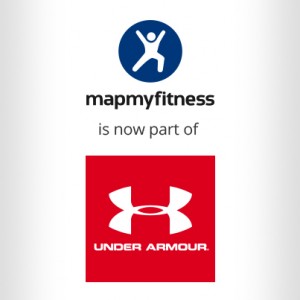UnderArmour buys MapMyFitness
Ajit Deshpande - November 21, 2013 - 0 Comments
 Last week, athletics apparel giant UnderArmour announced that it was buying fitness tracking mobile startup MapMyFitness for $150 million. Founded in 2007, MapMyFitness had raised approx. $23 million in venture capital. MapMyFitness currently has a community of 20 million users, of which 9 million are monthly active users. As a smartphone app company with no wearable device of its own, MapMyFitness can currently connect to and import workout data from more than 400 wearable fitness devices, including Garmin, Fitbit, Jawbone and Nike+.
Last week, athletics apparel giant UnderArmour announced that it was buying fitness tracking mobile startup MapMyFitness for $150 million. Founded in 2007, MapMyFitness had raised approx. $23 million in venture capital. MapMyFitness currently has a community of 20 million users, of which 9 million are monthly active users. As a smartphone app company with no wearable device of its own, MapMyFitness can currently connect to and import workout data from more than 400 wearable fitness devices, including Garmin, Fitbit, Jawbone and Nike+.
In today’s world, we have hundreds of wearable devices, each with the ability to connect with a smartphone and/or the cloud, and each with its own data silo. Given the significance of this data in the broader context of individual wellness and health, there is immense opportunity for a neutral third party to emerge as an aggregator and repository of data across the device ecosystem. With a growing community of wellness enthusiasts, MapMyFitness was in position to become this neutral aggregator, but now, with UnderArmour (with its own fitness chest band Armour39, and potentially other devices in the pipeline), MapMyFitness is no longer ‘neutral’. Will the MapMyFitness community wane with the acquisition? Likely not, since UnderArmour likely isn’t as polarizing an acquirer in the wearables space as, say Facebook seemed for Instagram (and even there, Instagram operating independently has continued to grow its community). But will MapMyFitness lose at least some of its interoperability with third party wearable devices given its new parent? Likely yes!
We now have two giants going after the tech-savvy fitness enthusiast: Nike, with its fuel band, Nike+ open APIs and its technology accelerators, and now UnderArmour with limited device presence but with scale in mobile and cloud. If UnderArmour plays its cards well with MapMyFitness, then we should relatively soon find out if the best way to build a dominant ecosystem around fitness data is from the wearable device out (like Nike), or from the mobile device in (like UnderArmour).
